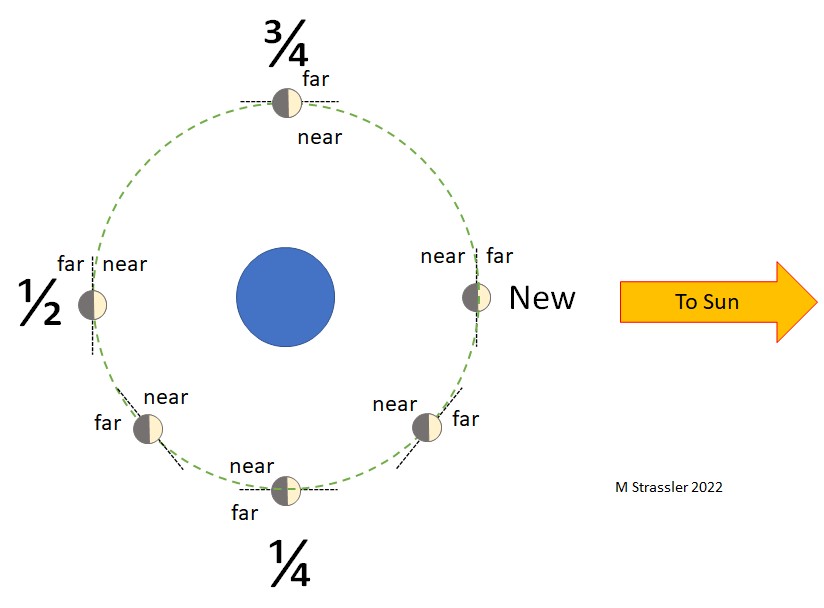The sun’s immense size compared to Earth is a dramatic illustration of the scale of our solar system. While we perceive the sun and moon as similarly sized objects in the sky, this is a trick of perspective. A simple observation of the moon’s phases reveals a surprising truth: the sun dwarfs our planet. This article will delve into the geometry behind the moon’s phases and demonstrate how it proves the sun’s significantly larger size.
Understanding the Moon’s Phases
The moon cycles through its phases over approximately 29.5 Earth days. These phases, from crescent to full and back again, are a result of the changing relationship between the half of the moon illuminated by the sun (the lit half) and the half visible from Earth (the near half).
When the moon is between the sun and Earth (New Moon), its lit half faces away from us, rendering it invisible. Conversely, during a Full Moon, the moon is on the opposite side of the Earth from the sun, so its near side is fully illuminated. Between these extremes, the near side is partially lit, creating the various crescent and gibbous phases.
Figure 1: The Moon’s phases. The changing relationship between the lit half and the near half creates the monthly cycle.
The Key: First Quarter vs. Half Lit
Crucially, the timing of the First Quarter moon, one-quarter of the way through its cycle (about 7.375 days after the New Moon), coincides with the moon being half lit. This seemingly simple fact carries significant implications.
If the sun were relatively small and close to Earth, like a larger version of the moon, the half-lit moon would appear several days before the First Quarter. However, this isn’t what we observe.
Figure 2: Comparison of Moon position when half-lit versus at First Quarter if the sun were close.
The near simultaneous occurrence of the half-lit phase and the First Quarter signifies that the sun is much further away than the moon and consequently, much larger.
Geometry Reveals the Sun’s Size
The further the sun is, the closer the angle between the sun and moon, as seen from Earth, will be to 90 degrees when the moon is half lit. Observations show this angle is indeed very close to 90 degrees.
Figure 3: The further the Sun, the closer the half-lit Moon is to its first-quarter position.
This simple geometric relationship allows us to estimate the sun’s minimum distance and size. Even a conservative estimate reveals the sun is at least ten times further away than the moon, making its diameter at least 2.5 times larger than Earth’s.
Figure 4: Verifying the 90-degree angle between the Sun and Moon during the half-lit phase.
Conclusion
By observing the moon’s phases and applying basic geometry, we can deduce that the sun is significantly larger than the Earth. While this method doesn’t provide precise measurements, it undeniably demonstrates the vast difference in scale between our planet and its star. The sun’s true size is approximately 109 times the diameter of Earth – a stark contrast to the seemingly similar sizes we perceive in the sky. This simple observation underscores the immense power and influence of the sun within our solar system.

